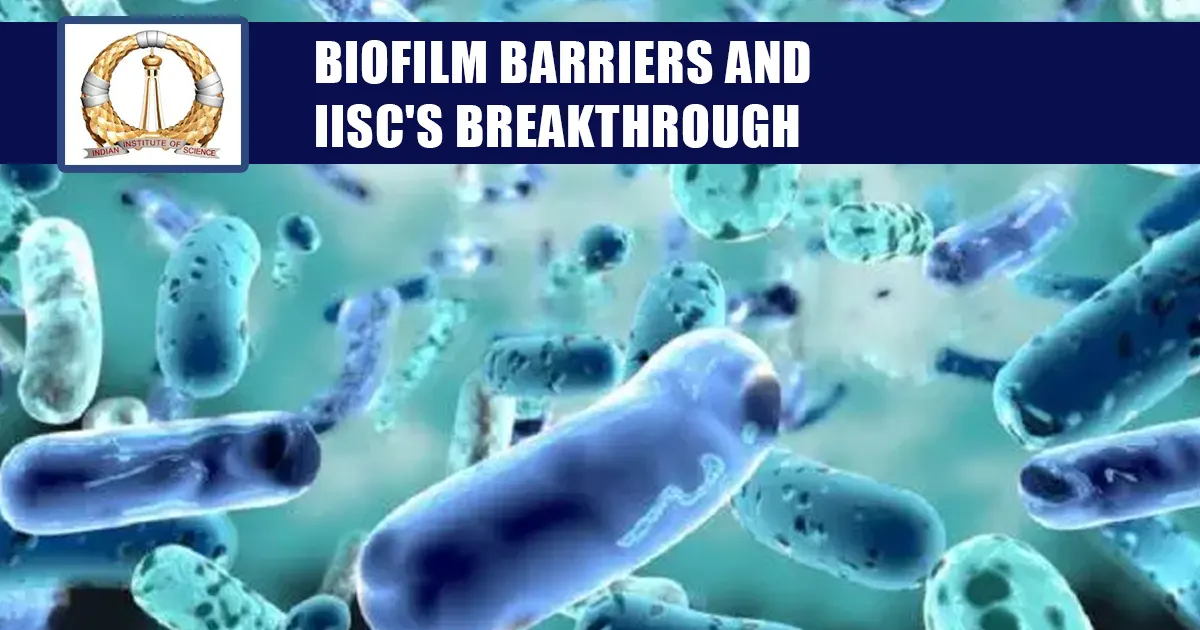
Context: Scientists at the Indian Institute of Science (IISc) have created a new method using enzymes from a cow’s gut to break down “biofilm barriers,” which can enhance drug effectiveness against bacteria.
Understanding Biofilms
- What Are Biofilms? Biofilms are dense, matrix-like structures produced by bacteria to protect themselves from external threats, including antibiotics. They consist of sugars, proteins, fats, and DNA.
- Challenge in Treating Infections: Biofilms prevent drugs from effectively reaching bacteria, leading to bacterial resistance and making infections harder to treat. The biofilms produced by Klebsiella pneumoniae are especially difficult to penetrate due to their high polysaccharide content. This bacterium, often found in hospital environments, is a common cause of infections.
Cow’s Gut Enzymes as a Solution
- Role of Cow’s Rumen: The rumen, a large compartment in a cow’s stomach, contains microbial enzymes that break down complex polysaccharides, such as cellulose.
- GH-B2 Enzyme Development: The IISc team artificially synthesized the GH-B2 enzyme, which effectively breaks down biofilms. Testing showed GH-B2 could degrade biofilms across various bacterial strains, suggesting its potential to weaken bacterial defenses and enhance drug delivery across multiple serotypes.




